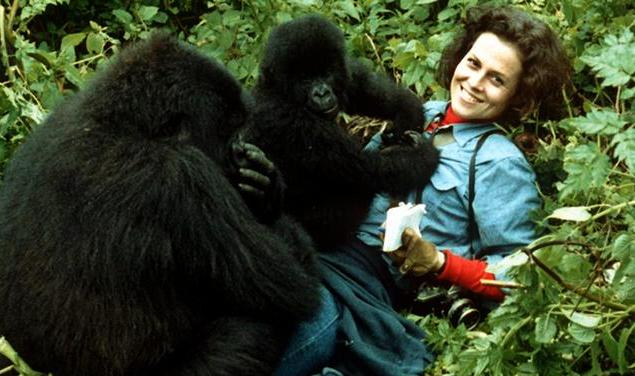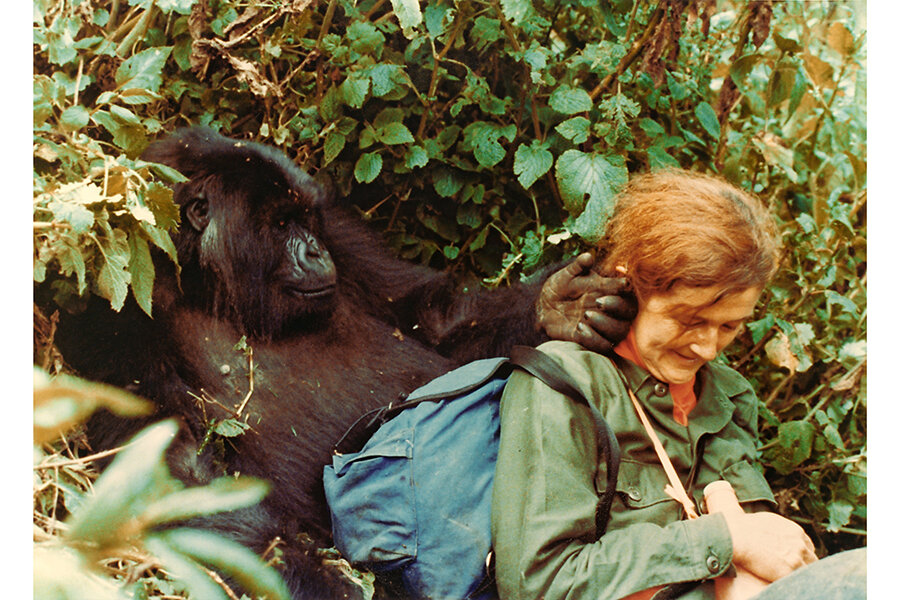
Dian Fossey’s work
Dian Fossey’s work
Dian Fossey’s work : Dian Fossey is one of the most celebrated individuals in Rwanda and the history of the mountain gorillas. Dian Fossey was among the first people to dedicate to study and protect the mountain gorillas. Dian Fossey visited Africa after admiring some photos a friend who had come back from an African safari. It was after this visit to Africa that Dian Fossey was approached by a one Dr George who pitched her the idea of having a long time study on the mountain gorillas.
Dian Fossey worked at a children’s clinic with a past of working at a farm where her passion and connection with animals developed. Dr George was her facilitator and push for her project and he bought her a land rover which she named Lily to move between destinations. Before Dian Fossey started her research, she passed by the one Jane Goodall another primatologist who was observing and researching on the chimpanzees at the Gombe Stream Research center to pick a leaf or two thus Dian Fossey’s work.
Dian Fossey set out to Uganda for her first stopover and camped at the Travelers Rest Camp, a small hotel in Kisoro owned by an advocate for the conservation of gorillas, Walter Baumgartel. He connected Dian Fossey to two photographers from Kenya who were already capturing images of these gentle giants and these are the people who helped Dian Fossey set up base in DR Congo.
Dian Fossey first spotted the mountain gorillas in Uganda however this time in Uganda was not for research. She spent some time with Alan Root and his partner for a while and later returned back to her home country to resume working at the Children’s center to pay back her debt that she acquired for her first visit to Africa.
Later in 1966, Dian Fossey once again embarked on her love for the mountain gorillas, she met up with Alan Root who accompanied her from Kenya and to the Democratic republic of Congo the then Zaire. Alan helped her get the permits that she needed for her research in the Virungas, the home of the mountain gorillas. He also helped her settle in and make some acquaintances to help when he left.
It was after Alan left Dian that she started to use the basic techniques that she had acquired in her time with him. She settled in at Kabara in a 7 by 10 foot tent that was the only space for her daily living. She partnered with a long time guide Senkwekwe who she worked closely with.
Dian started on her habituating process and the first day of her tracking, she was welcomed by a lone gorilla just after 10 minutes’ walk whose presence surprised her and she retreated back into the thick bushes. She warmed up to them eventually, sometimes acting like them, chewing grass, scratching or feeding on the wild fruits as they warmed up to her.

Dian Fossey’s first place of study was at the slopes of a dormant volcano of the Virunga mountains the mount Mikeno. It is this area where she spotted three gorilla groups to do her research on.
Dian Fossey realized that it would take more patience for the mountain gorillas to warm up to her presence and she took it slow and at the animals’ terms and had limits whenever interacting with them. As Dian Fossey spent more time in the wild with the mountain gorillas, she realized their biggest threat were the humans; the poachers and the cattle keepers in the area.
Dian was forced to relocate from DR Congo after the instability in the area and being held in a military home for about 3 weeks and moved back to Uganda and later connected down to Rwanda to continue her research. Rwanda was where her efforts were much felt as she settled at the slopes of mount Karisimbi and Mount Bisoke.
On arrival to Rwanda, Dian found the slopes filled with human settlement and farm land which was disappointing for her. She acquired the necessary permits to work in Rwanda and went ahead to set up a research center called Karisoke research center named after the Mount Karisimbi and Mount Bisoke.
Dian Fossey protected the mountain gorillas physically, verbally and even emotionally. She had daily recordings of data containing her achievements, acknowledgements of the feeding behaviors, the lifestyle, the threats as she also noticed the gorillas warm up to her. She strongly fought off the poachers and the other land encroachers. She at times wore masks to scare away the poachers, picking out their traps and even go to lengths of spray painting the cattle to make the farmers not want to bring them into the forest or even talk one on one with the poachers.
This active conservation was winning for the mountain gorillas however it was not as popular among the locals. During her stay in the Volcanoes national park, she made a close friend of a mountain gorilla and named him Digit and this was because he had a damaged finger. Poachers killed digit shortly after 10 years and also the death of Dian Fossey was linked to poachers as she was found lifeless in her cabin with machete in her skull.
The Dian Fossey tomb, research center and Dian Fossey Gorilla Fund museum is still standing and guests on a Rwanda safari or on a visit to the Volcanoes national park can take some time to pay their tributes to her work and one of the big reasons the gorillas are still thriving.


